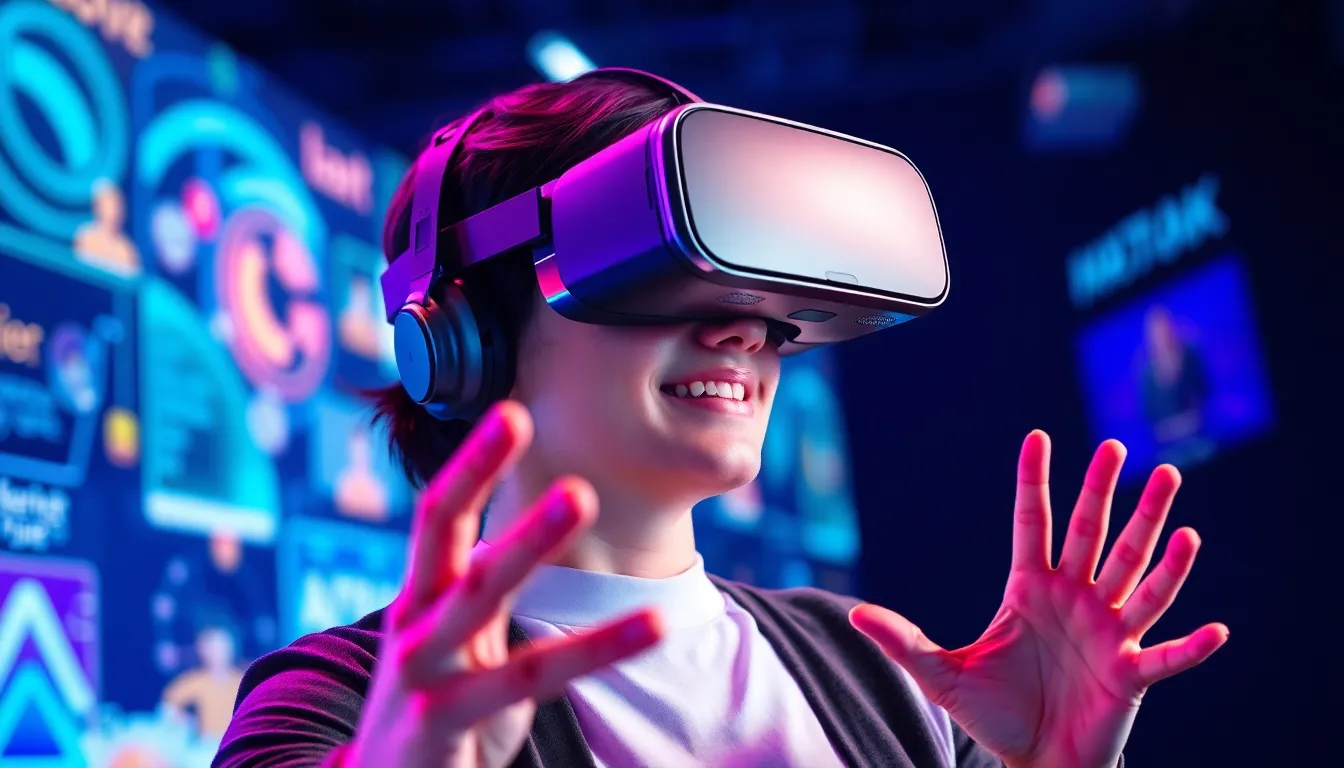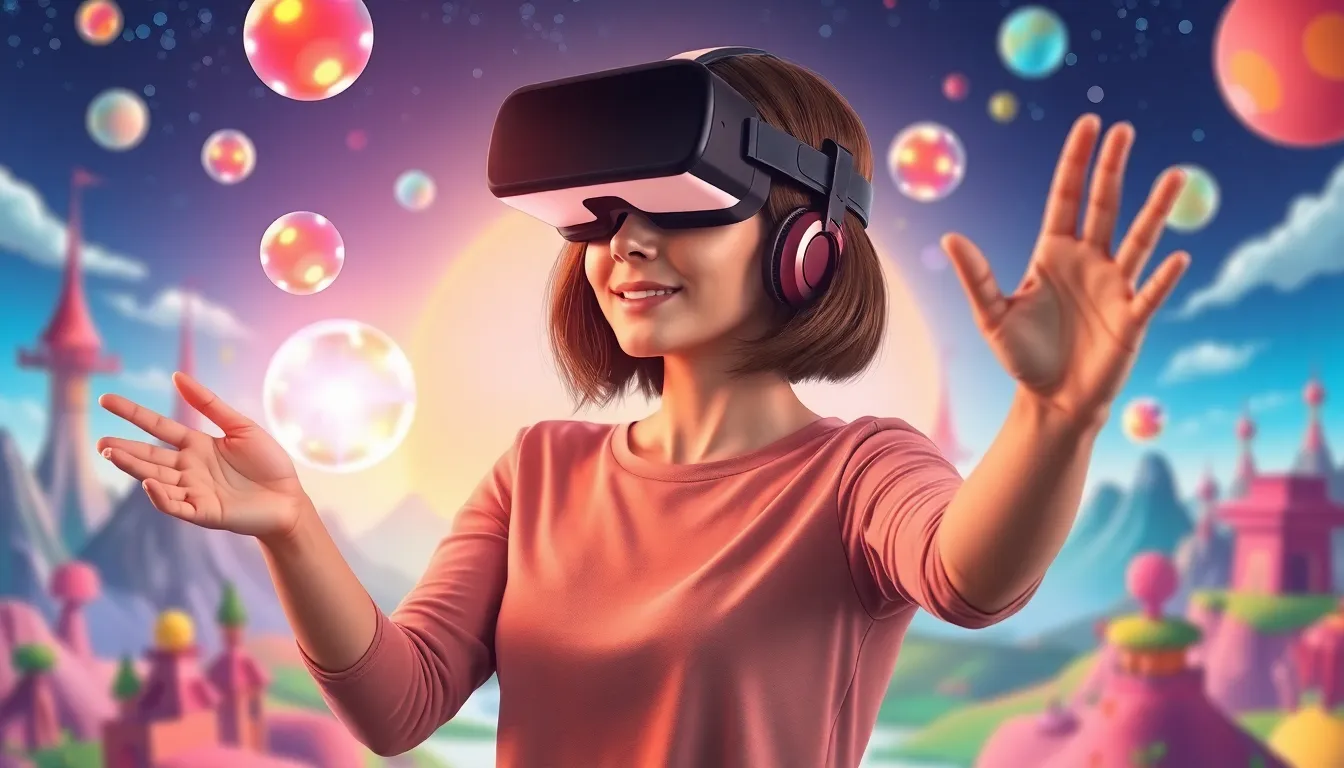Table of Contents
ToggleImagine slipping into a world where reality is just a suggestion and the only limit is your imagination. Welcome to the quirky realm of virtual virtual reality, where the lines between the real and the virtual blur in the most delightful ways. It’s like experiencing a dream within a dream—without the risk of waking up in your pajamas at a family gathering.
What Is Virtual Virtual Reality?
Virtual virtual reality refers to a distinct layer of immersive experience that transcends traditional virtual reality. In this unique space, users interact with a blend of real and imagined environments. He or she can explore realms created by other users, emphasizing creativity and collaboration. Interaction often takes place within environments designed to resemble virtual reality settings.
A unique aspect of virtual virtual reality is its ability to simulate experiences that challenge the bounds of physical reality. Users encounter environments filled with animated objects, surreal landscapes, and fantastical creatures. Each interaction occurs without any limits set by the actual world.
Imagine stepping into a world where the conventional rules of physics do not apply. In this layer, individuals can manipulate objects, shift realities, and experience stimuli that evoke strong emotional responses. Design elements often prioritize engagement and whimsy, drawing users deeper into fantastical stories.
Multiple platforms support virtual virtual reality experiences, allowing users to access this imaginative playground. Popular examples include virtual worlds where users create avatars, build structures, and socialize with others. These environments offer endless opportunities for exploration and creativity.
Virtual virtual reality merges imagination and technology, creating new avenues for entertainment and collaboration. Its captivating nature continues to attract a curious audience eager to reinvent reality and develop engaging narratives together.
The Evolution of Virtual Reality

Virtual virtual reality builds on a rich history of virtual reality advancements. Early innovations in this field laid the groundwork for immersive experiences that engage users.
Early Innovations
Researchers in the 1960s developed the first virtual reality systems, introducing concepts like head-mounted displays and sensory immersion. Notably, the Sensorama, created by Morton Heilig in 1962, combined visuals, sound, and smell to enhance the viewing experience. By the 1980s, more sophisticated VR systems emerged, allowing users to explore computer-generated environments. VPL Research released the DataGlove and EyePhone, facilitating interaction within virtual spaces. These early innovations sparked interest across various sectors, from gaming to education, paving the way for further advancements in immersive technology.
Current Technologies
Advancements in VR technology have transformed the landscape, making experiences more accessible and engaging. Companies like Oculus, HTC, and Sony offer high-quality headsets featuring improved graphics and motion tracking. 6DOF tracking allows users to move freely in three dimensions, enhancing immersion significantly. Current software platforms support social interaction and user-generated content, expanding the reach of virtual virtual reality. Furthermore, the integration of artificial intelligence personalizes experiences, adapting environments based on user preferences. Innovations continue to redefine the boundaries of reality, ensuring virtual virtual reality remains a dynamic frontier.
The Concept of Virtual Virtual Reality
Virtual virtual reality presents a creative layer of immersive experiences that blend real and imagined worlds. This environment allows users to explore and interact with elements that challenge physical limitations.
Defining Virtual Virtual Reality
Virtual virtual reality represents an extension of traditional immersion by creating fantasies that enhance user engagement. Users experience vivid realms populated with animated elements and peculiar creatures. Captivating design encourages participation and emotional connection, enabling exploration of limitless settings. Players find themselves designing, building, and manipulating their surroundings, which emphasizes collaboration and creativity. This space thrives on spontaneity and imaginative storytelling.
Differences from Traditional Virtual Reality
Traditional virtual reality confines users within predefined parameters, focusing mainly on replicating reality. Virtual virtual reality, in contrast, encourages deviation from the norm and fosters whimsical exploration. Physical constraints diminish in this environment, allowing for surreal interactions and unexpected experiences. Users interact with objects that defy logic, unlike in standard virtual contexts, where realism prevails. Participants prioritize creativity and socialization, nurturing a community invested in collective world-building. Thus, the immersive experience transforms into an unpredictable adventure, making virtual virtual reality a distinct entity within the digital landscape.
Applications of Virtual Virtual Reality
Virtual virtual reality offers diverse applications across various sectors, expanding the boundaries of immersive experiences.
Entertainment
Entertainment thrives in the realm of virtual virtual reality. Gamers explore uniquely crafted worlds where imagination reigns. Users engage in interactive storytelling with animated characters, enhancing enjoyment. Live performances can transform into immersive experiences, allowing audiences to engage with the show. Art installations blend creativity with technology, providing visitors with visual and emotional connections. Collaboratively, creators can develop narratives that challenge traditional storytelling methods.
Education and Training
Education benefits from virtual virtual reality through innovative learning experiences. Immersive simulations allow students to engage with complex subjects in a dynamic way. Historical events become tangible, enabling learners to participate actively. Professionals can practice skills in realistic environments, enhancing their training without real-world risks. This engaging approach promotes knowledge retention, leading to better outcomes. Collaborative projects motivate teamwork and creativity among students, enriching the educational experience.
Therapeutic Uses
Therapeutic uses of virtual virtual reality create new paths for healing. Patients can confront phobias in controlled settings, gradually desensitizing fears. Immersive environments support relaxation and mindfulness, reducing anxiety. Therapy sessions incorporate role-playing scenarios, aiding emotional expression. Additionally, rehabilitation programs leverage interactive experiences to encourage physical activity, facilitating recovery. Overall, these applications transform therapeutic practices, enhancing well-being and providing unique support.
Challenges and Limitations
Virtual virtual reality presents notable challenges and limitations. Technical constraints affect user experiences. Insufficient processing power may lead to lag or suboptimal graphics, disrupting immersion. Hardware accessibility represents another barrier, as high-quality headsets and systems often require significant investment.
User experience variations can also pose issues. Individuals may feel disoriented or overwhelmed by complex environments, preventing enjoyment. Moreover, social interactions within these spaces may lack the depth found in face-to-face engagement, leading to feelings of isolation.
Platform fragmentation complicates matters further. Numerous applications exist, each with unique interfaces and communities, making it difficult for users to navigate experiences seamlessly. This division can hinder collaborative projects as users may struggle to communicate across varying platforms.
Content moderation stands as another significant challenge. In a creative landscape that thrives on user-generated content, maintaining a safe and inclusive environment becomes essential. Inappropriate or harmful content might diminish the overall experience for users, necessitating vigilant moderation efforts.
Legal and ethical issues also arise, particularly concerning intellectual property. Ownership of creations within virtual virtual reality can become contentious, potentially stifling innovation. Rights to digital assets remain unclear, creating uncertainty for creators and users alike.
While virtual virtual reality expands creative horizons, it also faces challenges that could impact its long-term sustainability. Addressing these limitations is crucial for fostering an environment conducive to exploration and collaboration. As developers and users navigate these obstacles, the evolution of this space will continue to unfold.
Virtual virtual reality stands at the intersection of imagination and technology. It invites users to step beyond the confines of traditional experiences and explore limitless creative possibilities. This innovative realm not only enhances entertainment and education but also opens new pathways for therapeutic applications.
While challenges exist, the potential for growth and evolution in this space is immense. As technology advances and communities continue to engage in collaborative world-building, virtual virtual reality is poised to redefine what it means to interact with both real and imagined environments. The future promises exciting adventures for those willing to embrace this whimsical journey.




